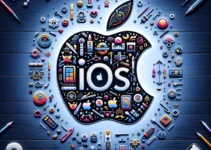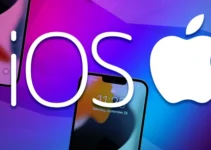A Comprehensive Guide to Screen Time Management on iOS Devices. In the digital age, the need to manage our screen time has become not just a recommendation, but a necessity for maintaining both mental and physical health. Apple’s Screen Time feature, integrated into iOS devices, serves as an essential tool for users looking to gain better control over their device usage. By providing detailed analytics on app usage and offering various management tools, Screen Time helps create a healthier balance between digital and real life.
Optimizing Your iOS Privacy Settings for Enhanced Security
Screen Time starts by offering a straightforward look into your daily and weekly device usage. It breaks down the amount of time spent on each app and website, which can be eye-opening for many users. This feature isn’t just about discouraging device use; rather, it’s aimed at promoting awareness and helping users make informed decisions about their time.
Setting up Screen Time is a simple process. Users can navigate to the settings menu on their device, find Screen Time, and activate it. This activation opens up a suite of features such as Downtime, App Limits, and Content & Privacy Restrictions, each designed to support specific management needs.
Downtime is particularly useful for those who struggle with nighttime device usage, which can interfere with sleep. By scheduling a block of time before bed where only essential apps are available, users can wind down without distractions. This not only improves sleep quality but also helps establish a calming nighttime routine.
App Limits allow users to set daily limits on categories of apps that tend to consume a lot of their time. For instance, if a user finds themselves spending hours on social media or games, they can set a reasonable limit, like 30 minutes per day. Once the limit is reached, the app is blocked, which helps curb overuse.
However, the flexibility of Screen Time is one of its greatest features. If an app limit is reached but more time is genuinely needed, users can choose to ignore the limit for the day, either for 15 more minutes or the rest of the day. This allows for adaptability based on changing daily needs.
Notifications can be a major distraction, leading to constant interruptions throughout the day. Screen Time provides tools to manage these notifications, allowing users to schedule them to arrive at convenient times or turn them off for specific apps altogether. This helps minimize disruptions during work or family time.
For families, Screen Time is a valuable tool for managing what children are exposed to on their devices. Parents can use Family Sharing to configure settings across all family devices from their own device, ensuring that content is appropriate and that usage limits are enforced.
Content and Privacy Restrictions are another layer of management offered by Screen Time. These settings allow users to block inappropriate content, manage privacy settings, and restrict purchases and downloads, enhancing security and preventing accidental or unauthorized transactions.
Reviewing the data collected by Screen Time is crucial for making effective changes to device usage habits. The feature provides comprehensive reports that highlight usage trends, allowing users to identify areas where they can improve.
While managing screen time is crucial for mental and physical health, it’s also about finding a balance. Prolonged periods of inactivity or excessive screen use can lead to health issues such as eye strain, poor posture, and other physical ailments. Screen Time helps users remember to take breaks, encouraging movement and activity throughout the day.
Moreover, unplugging entirely from time to time is beneficial. Engaging in regular digital detoxes helps reset one’s focus and improves overall productivity when returning to digital tasks. These breaks can be especially refreshing and revitalizing, providing much-needed respite from the digital world.
Balancing technology with face-to-face interactions, outdoor activities, and other non-digital experiences is essential for a well-rounded life. Screen Time’s tools help facilitate this balance by ensuring that technology usage doesn’t overshadow other important aspects of life.
For those looking to improve themselves through learning or skill acquisition, Screen Time can also be set to favor educational apps, allocating more time where it can be most beneficial. This helps users stay focused on personal growth and learning goals.
In a professional context, maintaining a clear distinction between work and personal life is crucial, and Screen Time can aid in this separation. By managing work-related app usage, professionals can better maintain their work-life balance, reducing the risk of burnout.
The impact of device usage extends beyond the individual to their relationships with others. By managing screen time, individuals can ensure they are fully present in their interactions with others, fostering stronger and more meaningful relationships.
As technology continues to evolve, so too do the tools available to manage our interaction with it. Apple’s continual updates to Screen Time reflect a commitment to adapting to users’ changing needs and the latest understanding of digital wellness.
Ultimately, Screen Time is more than just a set of restrictions; it is a comprehensive management tool that, when used wisely, can significantly enhance one’s quality of life. By taking control of how and when they interact with their devices, users can ensure that their technology serves them well, supporting a healthy, balanced lifestyle.
Through conscious effort and regular use of Screen Time, individuals can achieve a healthier relationship with their devices, ensuring that technology use is balanced, purposeful



